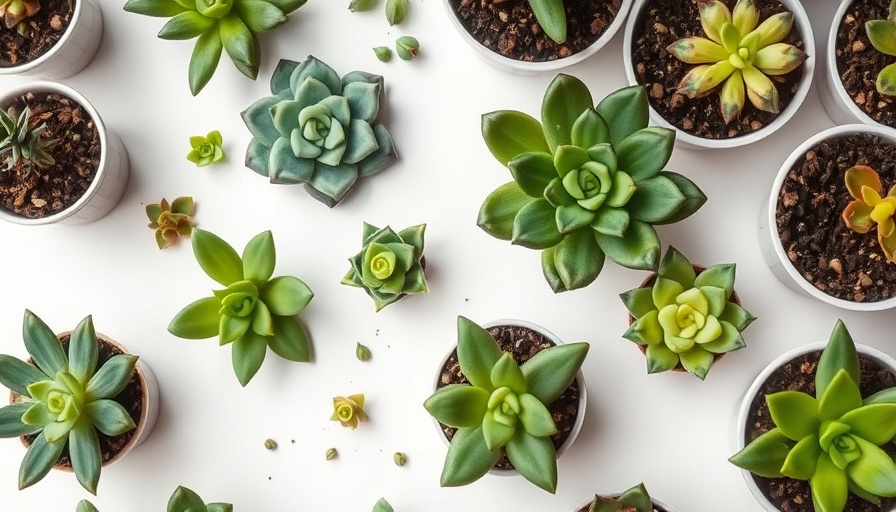
Grow Your Garden: The Joy of Succulent Propagation
If you’ve ever admired the vibrant hues and unique shapes of succulents, you might be wondering how to expand your lush indoor garden. Propagating succulents is not just a rewarding endeavor; it’s also a delightful way to connect with nature and share green gifts with friends and family. Whether you want to add to your collection or simply brighten someone's day with a homemade plant baby, this guide will help you effortlessly multiply your succulents!
Understanding Succulent Propagation
At its core, propagation is about creating new plants from parts of an existing one. It's a process that not only revitalizes your plants but also offers a second chance for those that may have outgrown their space. Popular propagation methods for succulents include:
- Leaf Propagation: Detach an individual leaf and place it in soil or water to sprout roots and pups.
- Stem Propagation: Cut a stem from the parent plant to grow new growth from its base.
- Root Propagation: Simply trim the plant down to the roots and let it rejuvenate.
- Soil and Water Propagation: Submerge cut parts in water or place them in soil, encouraging new roots to develop.
- Air Propagation: An advanced method allows the plant to form roots while suspended without direct contact with soil or water.
Timing Your Propagation for Best Results
Spring and summer are ideal seasons for propagation, coinciding with the active growth period of succulents. However, even during the cooler months, you can attempt propagation, though the results may take longer. For instance, if you have an overgrown Echeveria that’s losing its shape, utilizing its leggy stems for propagation can result in a beautiful new set of plants in no time!
Step-by-Step Guide: How to Propagate Succulents
While the process may sound complex, it's fairly straightforward. Here’s a simplified plan:
- Choose Your Method: Decide whether you'll propagate from leaves, stems, or roots.
- Prepare Your Materials: Gather pots with well-draining soil or jars of water.
- Make Your Cuttings: Use sterile tools to ensure your plants are healthy.
- Allow for Callousing: Leave your cuttings to dry for a day or two before planting to prevent rot.
- Plant and Wait: Place your cuttings in the soil or water, care for them, and patiently await new growth.
It may take a few weeks, but you’ll see the fruits of your labor pay off as fresh new plants start to sprout!
Embracing the Process: Tips for Success
Patience is crucial in gardening, especially with succulents. Remember to water sparingly, as overwatering can lead to rot, and always use soil that drains well. Keep an eye out for the roots to ensure they are developing properly. Moreover, enjoy the entire process; gardening is as much about the journey as it is the result!
A Quick Recap on the Benefits of Propagation
Not only does propagating succulents fill your home with lush greenery, it’s also an environmentally friendly way to grow more plants without purchasing new ones. Plus, sharing your homegrown succulents can foster connections with friends and community members who appreciate the beauty of these vibrant plants. So, why not take this opportunity to learn and grow together?
As you consider your propagation journey, visualize the joy of creating something from your own plants. Grab your tools and get started!
 Add Row
Add Row  Add
Add 




 Add Row
Add Row  Add
Add 

Write A Comment